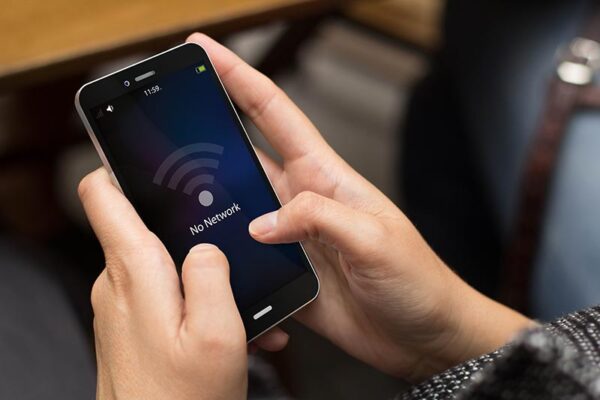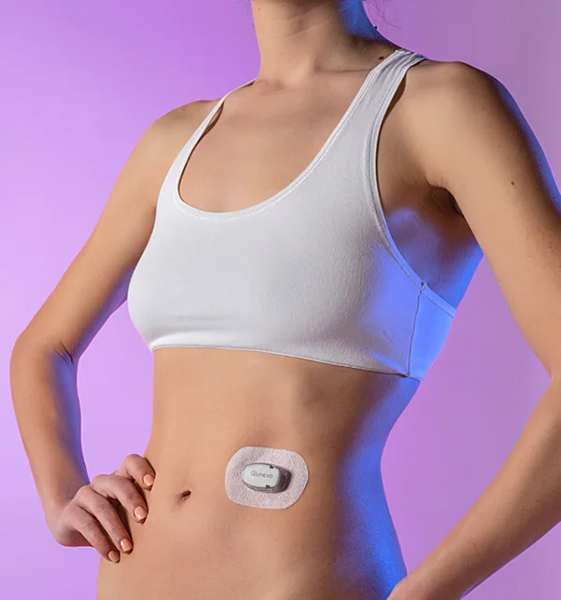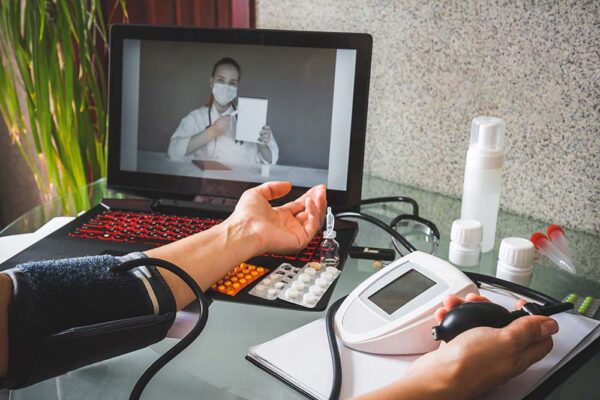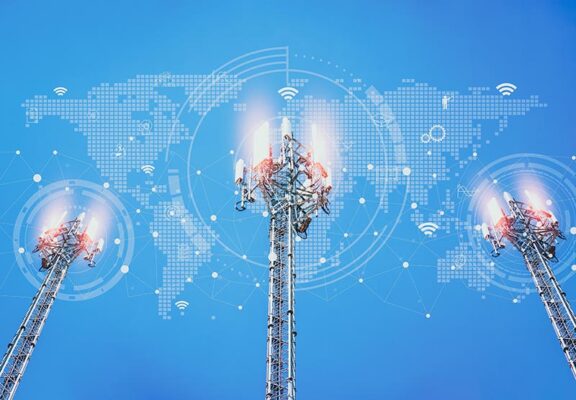Cellular IoT, Wi-Fi or Bluetooth® Wireless Technology?

Connected health care played an essential life-saving role amid the COVID-19 pandemic. It continues to be a critical application with rapidly increasing adoption. Health care workers using telehealth applications shouldn’t worry about device connectivity in mission-critical situations.
However, keeping device connections stable in mobile health scenarios can be challenging. Many smart health care devices like monitors and trackers depend on Wi-Fi or Bluetooth technology to send and receive data. They must be within range of a cellular phone, internet router or gateway to connect to the cloud and send their data.
In remote health care settings, Wi-Fi and Bluetooth wireless technology might not be enough to provide always-on connectivity for telehealth devices. As cellular IoT coverage becomes ubiquitous worldwide, OEMs consider it a viable alternative to connect their medical IoT devices.
Learn More about Connected Medical Devices
Table of Contents
- Cellular IoT, Wi-Fi or Bluetooth® Wireless Technology?
- The Shortcomings of Using Wi-Fi and Bluetooth Technology for Connected Health Care
- Why Use Cellular IoT Connectivity for Smart Health Care?
- Connected Health Care Use Case: Alpha Pharma
- 3 Cellular Connectivity Challenges to Consider
- Diagnosing Your Smart Health Care Device’s Connectivity Needs
- The Hybrid Connectivity Approach for IoT Health Care
- Finding the Right IoT Connectivity Solution
- Key Takeaways
The Shortcomings of Using Wi-Fi and Bluetooth Technology for Connected Health Care

Wi-Fi is a low-cost solution suited to many situations. Still, it has several drawbacks, including potential security challenges and coverage limitations. Wi-Fi depends on an intermediary transmitter — the router — to deliver connectivity to end devices.
Wi-Fi routers provide a strong signal in a limited area around the Wi-Fi network they create. However, the Wi-Fi network’s footprint is limited in terms of ubiquitous coverage. Obstructions such as brick or cement walls can be problematic.
Bluetooth technology can reach a 100-meter outdoor range in optimal conditions. The recent Bluetooth Low Energy 5.0 technology can deliver a more extended range with lower power consumption. Like Wi-Fi, Bluetooth technology depends on a local hub to establish and maintain connectivity (e.g., pairing an end device with a smartphone).
Why Use Cellular IoT Connectivity for Smart Health Care?
Cellular connectivity offers advantages over Wi-Fi and Bluetooth wireless technology in several key areas, including:
Reliability
The pandemic highlighted a need for reliable telehealth end devices to maintain stable connections in different locations. Imagine a health care worker making a home visit to an elderly patient. Suppose the worker’s devices rely on Wi-Fi. However, the patient lacks a broadband internet connection at home or the security credentials to enable the worker’s device on the wireless LAN.
In that case, the device won’t be able to access necessary application resources and perhaps not even operate. Wi-Fi devices depend on a working and locally configured router. Devices with Bluetooth technology also depend on pairing with a smartphone or other gateway device. A cellular connection allows telehealth end devices to stay online without an intermediary connection point, even as they travel.
Scalability
Wi-Fi access points limit the number of devices that can simultaneously maintain a connection. The facility must install additional Wi-Fi equipment to support more devices on the local network. That approach works in specific scenarios, such as scaling slowly in a dedicated facility like a hospital.
However, a health care provider may want to introduce many medical IoT end devices at once. Cellular provides an avenue to scale significantly without needing to touch infrastructure. There are scaling limits with cellular, too, but these are much higher. In addition, there is substantial “intelligence” in the cellular infrastructure to accommodate peaks in demand.
Better Data Access
OEMs need access to anonymized patient data to make the best use of analytics. Health care providers can use, collect and resell that data to other firms (e.g., companies interested in machine learning). Such data can create risk scores and identify variables in test results that may lead to better patient outcomes.
Efficiently gathering patient data can be tricky within a Wi-Fi infrastructure, as firewalls may prevent access. Cellular connectivity allows providers to access anonymized data sets efficiently while maintaining security and privacy.
Security
Wi-Fi networks need to be actively protected from cybersecurity breaches. Wi-Fi networks include encryption capabilities, but it only encrypts data when enabled. New threats are constantly emerging, so network managers must keep up with downloading security patches and updates.
On the other hand, cellular data is encrypted by default. The provider’s cybersecurity team manages security updates. Wi-Fi 6 provides new security features with the introduction of WPA3. Still, cellular networks offer more robust end-to-end security built into the technology.
Connected Health Care Use Case: Alpha Pharma
Alpha Pharma, a life science company based in Italy, makes connected glucometers to help patients with diabetes monitor their blood sugar. Its Iris Hybrid glucometer integrates continuous glucose monitoring with artificial intelligence (AI) to support patients and providers in treatment efforts.
“Managing diabetes requires constant monitoring and decision-making. Our devices create a continual link between patients and providers. Our platform’s algorithms predict problems so patients can take preventative action.”
Francesco Cannone, CTO, Alpha Pharma
The Iris Hybrid relies on cellular connectivity to deliver data from the device to Alpha Pharma’s cloud-based telemedicine platform, Iris Health Care.
From the beginning, the company chose cellular to connect its telehealth devices. It saw several clear benefits, including coverage, versatility and the ability to collect and aggregate better-quality data for providers. It started with a single local carrier. Then it moved to Telit Cinterion for broader coverage and the ability to switch between carriers when devices travel.
Cannone says the company is considering a hybrid cellular and Bluetooth technology model for future products. This model will create a way to incorporate other smart health care devices and accessories in their health management platform.

“We needed to connect the devices of people moving around the world. We couldn’t ask patients to take the extra step of linking their glucometer to a smartphone or finding a Wi-Fi network. Cellular allows clients and patients to use our devices everywhere — without needing to take additional actions to connect.”
Francesco Cannone, CTO, Alpha Pharma

3 Cellular Connectivity Challenges to Consider
Cellular connectivity introduces new possibilities for connected health care applications. Still, it also carries potential challenges. Here are a few to consider:
1. Time to Market
Regulatory compliance for connected health care devices is often rigorous and can differ depending on the deployment region. Most countries have testing and certification requirements for health care devices. In addition to wireless certifications, medical-grade certifications can increase the time to get a telehealth device from design to market.
For example, in the U.S., the FDA device certification process can be long and complicated. Cellular adds a layer of complexity for smart health care devices. OEMs must also seek FCC, GCF, PTCRB and specific operator certifications to operate a cellular device. Devices with Wi-Fi and Bluetooth technology need FCC and Bluetooth SIG certification.
2. Connected Health Care Design Complications
Carrier certification and regulatory requirements impact device design, as do the required radio frequency (RF) capabilities. Wi-Fi and Bluetooth wireless technology are relatively simple, with one or two RF bands and various antenna solutions.
Cellular device design, on the other hand, is far more complicated when it comes to RF. Devices must be able to connect in different countries with various operators. Therefore, they might need to support a dozen or more frequency bands. This gives rise to interference and coexistence engineering design challenges.
3. Power Management
While cellular offers more flexibility and mobility, it consumes more power, particularly if transferring data at Gigabit LTE speeds. Cellular devices must transmit strongly enough to reach a cell site hundreds of meters away, even at lower data speeds. That effort can quickly drain battery power.
New cellular IoT technologies, like Cat M and NB-IoT, attempt to solve that problem, offering all the benefits of cellular and extremely low power consumption. Cat M and NB-IoT technologies are for intermittent machine-to-machine (M2M) communication. They have slower data transfer speeds than other LTE devices.
Still, Cat M and NB-IoT provide the ubiquitous connectivity feature that Wi-Fi and Bluetooth technology cannot. LTE-M and NB-IoT offer power-saving strategies, such as Power Saving Mode (PSM) and extended Discontinuous Reception (eDRX). Designers can use these to extend the operating time for battery-powered devices.
Diagnosing Your Smart Health Care Device’s Connectivity Needs
There’s no one-size-fits-all connectivity option for connected health care devices. Instead, OEMs must consider their use case’s needs and find the best solution. When choosing the right connectivity solution for your medical IoT devices, here are a few key questions to consider:
- In what region(s) will the device be deployed? What regulations will it need to comply with regarding data privacy and security?
- Is the device usage mostly fixed or mobile? (Will the patient take this device in their vehicle or while traveling?)
- How much data will this device consume? (Is it using a large amount of data because of high-definition video or images? Is it sending small amounts of data from a medical device? Does it rely on real-time voice communications?)
- Will many devices be connected simultaneously (e.g., in a hospital setting)?
- Is the device intended for home health use (if it’s Wi-Fi-based and subject to the patient’s home internet connection)?
- How will the type of connectivity affect device aesthetics, such as antennas?
- Will device location services be needed?

Drop-In Networking
Cellular does not depend on Wi-Fi access points. It enables a service provider to utilize drop-in networking. This capability allows IoT providers to segment their services from the rest of the health care facility’s network.
Because of security concerns, many organizations do not allow third-party service providers to access their central infrastructure. Drop-in networking allows smart health care companies to provide devices and connectivity to a health care facility without needing access through wired or wireless LANs.
The Hybrid Connectivity Approach for IoT Health Care

For your device, the best solution might be a blend of connectivity options. Many use cases benefit from a hybrid approach, combining the strengths of multiple protocols in a single product.
Suppose a health care provider gives a patient a blood pressure cuff to use at home. The cuff connects via Wi-Fi or Bluetooth wireless technology to send data to a home hub. Then the data is aggregated and sent via cellular connection to a cloud management platform so that health care providers can access it.
This arrangement avoids the complication of seeking a wearable cellular device certification, as the wearable itself is not cellular. The hub’s cellular connection ensures a more reliable avenue for data to return to health care providers.
On the other hand, a cellular-connected medical device (e.g., a blood pressure monitor) does not rely on connecting to a hub or a smartphone hotspot. It is fully autonomous. It can talk directly to the cloud, be monitored remotely and be used in a mobile setting (e.g., inside a moving vehicle).
Finding the Right IoT Connectivity Solution
Connectivity is a pivotal component of every connected health care device. Telit Cinterion offers intelligent insights into the industry and can provide expertise to help you make connectivity an intrinsic part of your design. We provide modules and data cards with cellular, Wi-Fi, Bluetooth wireless technology and GNSS. We also offer cost-optimized cellular connectivity plans that can lower the device’s total cost of ownership.
Key Takeaways
- Cellular connectivity offers strategic advantages over Wi-Fi and Bluetooth technology. It provides stable connections in various locations, especially in remote health care settings. It is also scalable without requiring significant infrastructure changes. Cellular provides efficient access to anonymized patient data and default decryption for enhanced security.
- Cellular connectivity also comes with challenges. Regulatory compliance for connected health care devices can increase the time to market. Device design is complex due to career certifications and regulatory requirements. Cellular connectivity consumes more power, so battery life must be considered.
- A hybrid connectivity approach combines the strengths of cellular, Wi-Fi and Bluetooth technology to create a flexible, reliable solution. It can also address specific use cases, such as using Wi-Fi or Bluetooth technology for local connectivity and cellular for remote data transmission.
Editor’s Note: This white paper was originally published in September 2020 and has since been updated.


